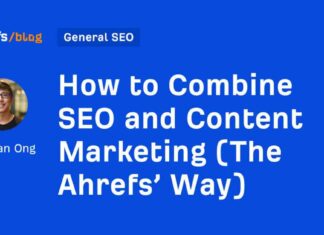AI Overviews: A Game-Changer in SEO
AI Overviews, also known as AIOs, have emerged as a significant change agent in the world of SEO. Some experts even suggest that they may be the most significant shift since the rise of mobile technology. Despite their importance, there has been a lack of representative data sets to analyze how AIOs function effectively.
Thanks to exclusive data provided by Surfer, a comprehensive analysis of over 546,000 AI Overviews was conducted, totaling more than 44 GB of data. This extensive dataset has shed light on the inner workings of AIOs, answering key questions about who, why, and how to rank in these AI-powered search results.
The Impact of AIOs on Traffic
One of the key findings from the analysis is the potential impact of AIOs on website traffic. The data suggests that AIOs can lead to a significant decrease in traffic, with some sites experiencing a drop of up to 10%. This decrease in traffic can be influenced by factors such as citation design and user intent, making it crucial for website owners to understand and optimize for AIOs effectively.
Since the initial launch of AIOs, there has been a gradual ramp-up in their presence and influence. This evolution highlights the ongoing importance of optimizing for AIOs to maintain visibility and traffic in search results.
Insights from the Data Analysis
The dataset used for the analysis includes over 546,000 rows of data, spanning 44.4 GB and encompassing more than 12 million domains. Some key insights from the data analysis include:
– 85% of queries and results are in English.
– 253,710 results are live, while 285,000 results are part of Google’s beta environment (SGE).
– 8,297 queries show AIOs for both SGE and non-SGE.
– The dataset contains information on queries, organic results, cited domains, and AIO answers.
– The data was pulled in June, providing a snapshot of the AI landscape at that time.
Limitations of the Analysis
While the analysis provides valuable insights into the world of AIOs, it is essential to acknowledge its limitations. For example, new features introduced after the data collection may not be included in the analysis. Additionally, languages such as Portuguese and Spanish, which were recently added to AIOs, are not represented in the dataset.
Key Questions Explored in the Analysis
The analysis sought to answer five key questions in the exploration of AIOs:
1. Which domains are most visible in AIOs?
2. Does every AIO have citations?
3. Does organic position determine AIO visibility?
4. How many AIOs contain the search query?
5. How different are AIOs in SGE compared to those outside of SGE?
Insights from the Analysis
The analysis revealed interesting findings about the visibility of domains in AIOs. While domains like YouTube and Wikipedia have traditionally been cited frequently in AIOs, the analysis showed a shift in the most cited domains. LinkedIn and health-related domains like NIH and Mayo Clinic emerged as top contenders in AIO citations.
Interestingly, social networks like Reddit and Quora, which have been prominent in traditional search results, were underrepresented in AIO citations. This unexpected finding raises questions about the evolving nature of AIO algorithms and the importance of optimizing content for social and video platforms.
The analysis also examined the presence of citations in AIOs, revealing that not all AIOs have citations. Queries with simple user intent may not show any citations, emphasizing the importance of understanding user intent and tailoring content accordingly.
The relationship between organic position and AIO visibility was also explored in the analysis. While there is a correlation between ranking higher in search results and being cited in AIOs, it is not the sole factor determining visibility. Google aims for diversity in AIO citations, highlighting the need for a holistic approach to SEO optimization.
Future Implications and Considerations
As AIOs continue to evolve and shape the SEO landscape, website owners and marketers must adapt their strategies to optimize for these AI-powered search results. Understanding user intent, creating valuable content, and monitoring changes in AIO design are essential steps to succeed in the ever-changing digital landscape.
In conclusion, AI Overviews represent a significant shift in SEO practices, requiring website owners to stay informed, adapt their strategies, and prioritize user intent in their content creation efforts. As AIOs continue to influence search results and traffic patterns, staying ahead of the curve and optimizing for these AI-driven features will be crucial for online success.















![Ultimate Social Media Content Calendar Template for Marketers [Free Download] news-28072024-183753](https://guestpostingforum.com/wp-content/uploads/2024/07/news-28072024-183753-100x70.jpg)







